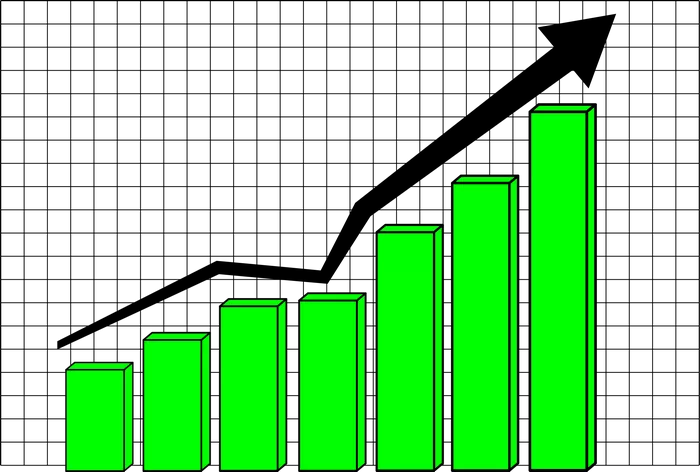Forex trading, or foreign exchange trading, is an investment opportunity that can lead to significant returns. However, it is essential to understand the basics, strategies, and risks involved before diving into this complex market. This article provides a comprehensive guide for beginners looking to get into Forex trading, covering essential concepts, trading strategies, risk management, and tips for success.
What Is Forex Trading
Forex trading involves the exchange of one currency for another in the hope of making a profit. The foreign exchange market, often referred to as the Forex market or FX market, is the largest and most liquid financial market globally, with trillions of dollars changing hands daily. This market operates 24 hours a day, five days a week, providing traders with constant opportunities to buy and sell currencies.
Currency pairs are the basic units of trade in the Forex market. Each currency pair consists of a base currency and a quote currency. For example, in the EUR/USD pair, the Euro (EUR) is the base currency, and the US Dollar (USD) is the quote currency. When you trade this pair, you are essentially buying the Euro and selling the US Dollar, or vice versa.
Before diving into Forex trading, it is crucial to understand some key terms and concepts:
Bid Price: The price a trader can sell a currency pair.
Ask Price: The price a trader can buy a currency pair.
Spread: The difference between the bid and ask prices.
Leverage: The ability to trade with borrowed capital, which can amplify both profits and losses.
Pip (Point in Percentage): The smallest increment of price movement in a currency pair, usually representing the fourth decimal place for most major currency pairs.
Understanding the Forex Market Structure
The Forex market is a decentralized, global market that operates through a network of banks, financial institutions, and individual traders. The market is divided into three main segments: the spot market, the forwards market, and the futures market.
Spot Market: This is the largest and most liquid segment, where currencies are traded for immediate delivery (usually within two business days).
Forwards Market: Transactions are settled at a future date, with the exchange rate agreed upon at the time of the contract.
Futures Market: Similar to the forwards market but traded on a regulated exchange with standardized contracts.
The participants in the Forex market include central banks, commercial banks, hedge funds, corporations, and retail traders. Each participant plays a unique role in shaping the market’s dynamics and price movements.
Advantages and Risks of Forex Trading
Forex trading offers several advantages, making it an attractive investment opportunity for many traders:
High Liquidity: The Forex market is highly liquid, allowing traders to buy and sell currencies quickly and efficiently, often at low transaction costs.
24-Hour Trading: The market operates around the clock, providing traders with continuous trading opportunities.
Leverage: Traders can use leverage to control larger positions with a relatively small amount of capital, potentially amplifying profits. However, it also increases the risk of losses.
Accessibility: With the advent of online trading platforms, Forex trading is accessible to anyone with an internet connection and a trading account.
Despite these advantages, Forex trading also involves significant risks:
Market Volatility: Currency prices can fluctuate rapidly, driven by economic data, geopolitical events, and other factors. This volatility can lead to substantial losses if traders are not well-prepared.
Leverage Risk: While leverage can amplify profits, it also increases the potential for losses. Mismanagement of leverage can quickly lead to significant financial losses.
Psychological Factors: Trading involves emotional and psychological challenges, such as fear, greed, and overconfidence. These factors can cloud traders’ judgment and lead to irrational decisions.
Regulatory Risks: The Forex market is largely unregulated, and there are many unscrupulous brokers and platforms operating in the space. Traders must exercise caution in choosing a reputable and regulated broker.
Building a Forex Trading Plan
Before diving into Forex trading, it is essential to develop a comprehensive trading plan. This plan should outline your trading objectives, strategies, risk management measures, and exit criteria. Here are the key steps to building a trading plan:
Define Your Trading Objectives: Determine what you want to achieve through Forex trading. Are you looking for short-term gains, long-term wealth accumulation, or a combination of both?
Choose a Trading Strategy: There are various trading strategies to choose from, including fundamental analysis, technical analysis, price action trading, and quantitative trading. Choose a strategy that aligns with your trading objectives, risk tolerance, and technical skills.
Backtest Your Strategy: Before implementing your strategy in the real market, backtest it using historical data. This will help you understand how the strategy performs in different market conditions and identify any potential issues.
Develop Risk Management Measures: Risk management is crucial in Forex trading. Define your risk tolerance, set stop-loss levels, and use leverage responsibly. Consider using risk management tools such as trailing stops and hedging strategies.
Monitor and Adjust Your Plan: The market is constantly changing, and your trading plan should evolve accordingly. Regularly review your performance, adjust your strategy as needed, and stay up-to-date on market developments.
Fundamental and Technical Analysis
Fundamental analysis and technical analysis are two popular methods used to predict currency price movements.
Fundamental Analysis: This method focuses on economic data, political events, and other macroeconomic factors that can affect currency values. Fundamental analysts look at indicators such as interest rates, inflation rates, trade balances, and political stability to predict currency movements. For example, a country with a strong economy and a stable government is likely to have a stronger currency.
Technical Analysis: Technical analysis focuses on price charts and technical indicators to identify patterns and trends in currency prices. Technical analysts use tools such as moving averages, relative strength indexes (RSI), and Fibonacci retracement levels to make trading decisions. Technical analysis is often used for short-term trading and can provide valuable insights into market sentiment and trader behavior.
Both fundamental and technical analysis have their strengths and weaknesses. Fundamental analysis can provide a broader perspective on currency movements but may be less useful for short-term trading. Technical analysis can be highly effective for short-term trading but may be less reliable in predicting long-term trends. Combining both methods can provide a more comprehensive view of the market and improve trading decisions.
Risk Management in Forex Trading
Risk management is crucial in Forex trading, as the market’s volatility and leverage can quickly lead to significant losses. Here are some key risk management strategies:
Set Clear Stop-Loss Levels: Define the maximum amount of money you are willing to lose on a trade before exiting the position. Stop-loss levels help limit losses and prevent traders from holding onto losing positions too long.
Use Leverage Responsibly: Leverage can amplify profits, but it also increases the potential for losses. Only use leverage when you are confident in your trading strategy and have a solid understanding of the market.
Diversify Your Portfolio: Don’t put all your eggs in one basket. Diversifying your portfolio by trading multiple currency pairs can help reduce overall risk.
Limit Your Risk Per Trade: Determine the maximum percentage of your trading capital you are willing to risk on each trade. A common rule of thumb is to risk no more than 2% of your trading capital per trade.
Regularly Review and Adjust Your Risk Management Measures: Risk management is an ongoing process. Regularly review your risk management strategy and adjust it as needed based on market conditions and your trading performance.
Tips for Successful Forex Trading
Here are some tips for successful Forex trading:
Start with a Demo Account: Before trading with real money, practice on a demo account. This will help you familiarize yourself with the trading platform and develop your trading skills without risking real capital.
Stay Informed: Keep up-to-date on market news and economic data that can affect currency prices. Use reliable news sources and economic calendars to stay informed.
Develop a Trading Routine: Consistency is key in Forex trading. Develop a trading routine that includes regular market analysis, trade execution, and performance review.
Manage Your Emotions: Trading can be an emotional experience. Learn to manage your emotions, stay calm under pressure, and avoid making irrational decisions based on fear or greed.
Seek Professional Advice: If you’re new to Forex trading, consider seeking professional advice from a financial advisor or experienced trader. They can provide guidance on trading strategies, risk management, and market analysis.
Conclusion
Forex trading offers significant opportunities for profit but also involves significant risks. Before diving into the market, it is essential to understand the basics, develop a comprehensive trading plan, and implement effective risk management strategies. By staying informed, practicing regularly, and managing your emotions, you can increase your chances of success in Forex trading.
Forex trading is not a get-rich-quick scheme. It requires hard work, dedication, and a willingness to learn and adapt. With the right mindset and approach, Forex trading can be a rewarding and exciting investment opportunity.
Related topics:
































